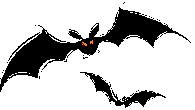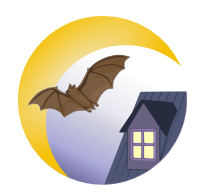Bats will fly into your hair and get stuck: False
This was an old myth that was used to deter young girls from going out at night. The myth was that if a young woman went out at night, a bat would fly into her hair and get stuck. In reality, bats are not interested in flying into your hair. They may fly close to you in search of insects but their amazing use of echolocation will prevent them from landing on you.
All bats carry rabies: False

The proportion of bats infected by rabies is estimated to be around 5% in bat samples submitted for testing. Bats that are submitted for testing are primarily those that are behaving atypically and/or could have been in contact with humans or pets. This value of 5% is higher than the estimated value for free-ranging bats, which is less than 0.1%. Bats that are infected with rabies will demonstrate strange behaviour and are often found lying on the ground. Rabies can be fatal for humans and other mammals, and care should be taken not to touch bats. Even dead bats can still harbour the rabies virus and should not be touched. If you are bitten by a bat, you should wash the wound with soap and water for 15 minutes and call the number associated with your province or territory: in Quebec: Info-Santé - 8-1-1, in Ontario: TeleHealth - 1-866-797-0000, in Manitoba: Health links - 1-888-315-9257, in the Yukon: HealthLine - 8-1-1. Because rabies virus can be transmitted to dogs and cats, it is important to vaccinate pets.
Bats are really just flying rodents: False
Like rodents, bats are also mammals but they belong to the order Chiroptera, whereas rodents like mice belong to the order Rodentia. Unlike rodents, they are not a nuisance.
All bats are blind: False
All bats in Canada use echolocation to navigate and find food, but they can also see and have well developed eyes.
All bats are blood feeders: False
Only three species of bats feed on blood of birds or livestock and those that do, live in tropical regions of North, Central and South America (e.g. Mexico, Chile, Brazil and Argentina). The majority of bats feed on insects, fruit or nectar.

